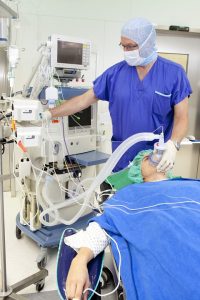 A study from Okayama University Hospital in Japan, recently published by Anesthesia Progress, a journal from the American Dental Society of Anesthesiology, shows that women need higher rates of sedation for oral surgery.
A study from Okayama University Hospital in Japan, recently published by Anesthesia Progress, a journal from the American Dental Society of Anesthesiology, shows that women need higher rates of sedation for oral surgery.
Sedation is a good solution for minimizing stress responses in both the behavior and the physiology of a patient. Even in minor oral procedures it helps to prevent increases in blood pressure and heart rate from fear or stress, and greatly reduces mental stresses that arise from surgery, which is a huge help to both the patient and also the oral surgeon who will be able to perform with fewer complications.
On the other hand, when sedation goes beyond the “moderate” level, you have potential airway problems, and delay in recovery as the body takes longer to process that much anesthesia. Implant surgery takes much longer than tooth extraction, and other oral procedures, and maintaining the right sedation level becomes more challenging as the length of the procedure grows.
This study was to find the best rate of infusion of Propofol for the goal of moderate, rather than deep, sedation. In the facility, the infusion rate is adjusted according to the bispectral index and a variety of analyses of the data afterward helped to determine all the independent factors that changed how effective the sedation was.
125 subjects participated in the study, and out of those 125, they found that women were reporting experiencing earlier emergence from the sedation than the men. A higher dose per body weight was needed in the female patients to maintain the same level of sedation as in the males. The findings of this study, if backed up by more research and more findings, will help to contribute to performing sager and more effective sedation during oral surgery.
Some of the potential complications from the study: “Although body weight was significantly and negatively correlated with the average infusion rate of propofol in this study, it was not shown to be an independent predictor, because lower body weight is a confounding factor of female sex. Age was significantly correlated with the primary outcome but was neither an independent predictor nor a confounding factor in regard to the sex of subjects. Because the elimination of propofol is slower in the geriatric population,the elimination rate of propofol is considered to decrease along with aging. However, because of a narrow age range, a small sample size, and an unequal sex ratio, significant modification by age might be masked in this study. In addition, midazolam was not shown to be an independent factor affecting the injection rate of propofol in this observational study, but it can be a factor if a high dose of midazolam is used. To assess the impact of midazolam, a prospective study in which only propofol is used should be performed on participants from a wide age range.”
